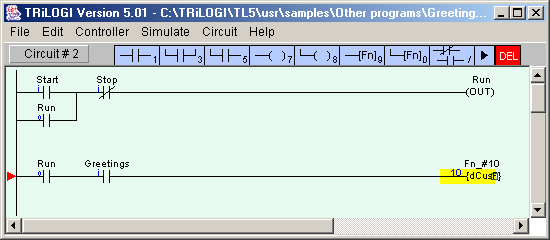Simple Programming Language

10 CLS 20 PRINT 'Helloooooooooooooo, world!' 30 PRINT 'I'm learning about commands in BASIC.' 40 PRINT 'This text is being printed via the PRINT command.' 50 PRINT 'On the next line, I'll use CLS.' 60 CLS 'Now the next word would be PRINT.' 70 PRINT 'Finally, on line 80, I'll use END.'
A programming language is a formal language that specifies a set of instructions that can be used to produce. Comparison of programming languages (basic. BASIC (an acronym for Beginner's All-purpose Symbolic Instruction Code) is a family of general-purpose, high-level programming languages whose design philosophy emphasizes ease of use. In 1964, John G. Kemeny and Thomas E. Kurtz designed the original BASIC language at Dartmouth College in New Hampshire, United States.
80 END 'And return to PRINT' 90 PRINT 'this is my answer.' Output [ ] Finally, on line 80, I'D. Discussion [ ] From that example, it's fairly easy to deduce what each command does. CLS An abbreviation that stands for the words CLear Screen. In the above program, when you used CLS on line 60, all of the words that were printed to the screen were wiped away. PRINT Writes to the screen. There are commands for printing to other things, like a printer, but that's to be discussed later.
Design Of Post Tensioned Slabs On Ground 3rd Edition Manual Woodworkers. Each new PRINT command will start printing on a new line. Download E T I Eloquence Jewelry on this page. To insert a blank line, don't specify a string to print.
The syntax for 'PRINT' is: PRINT '[whatever you want to be printed here]' END It stops the program at that line; that is, anything that's added after that won't show. That's why the PRINT command on line 90 didn't print anything.
The END command can be included in control structures to end the program if a condition is met. This will be discussed with control structures. What is happening? Line 10 the display is cleared. Lines 20 through 50 shows first paragraph displayed.
Line 60 again clears the display. Line 70 shows the message you should see after you run this program. Line 80 Ends the program.
Line 90 This line helps to show that a END statement stops the program at that point. Given the state of computer speed today you should not see the paragraph displayed by lines 20 through 50, it should be cleared by the CLS statement on Line 60 before you have a chance to see it. If you slow the program down you can see the program write the message to the screen. Line 70 is then written to the screen/display then Line 80 stops everything. Line 90 never, ever runs.
Contents • • • • • • • Programming Preliminaries [ ] Anybody can write a program. A background in mathematics or science is not required.
Patience, practice, and an interest in the subject matter should suffice, along with the required software and hardware. Understanding programs can appear daunting at first, but their reliance on logical operations allow for easy learning of commands which you will commonly see in many programs.
A program itself is merely a series of commands in the order in which they are to be executed. That is to say, that the first line is the beginning of the program! All programs a user uses from day to day, including browsers (Internet Explorer, Firefox, etc.) and operating systems (Windows, *nix and MacOS) are separate sets of lines of code, which aim to fulfill tasks. The amount of code is dependent on how simple the task generally, and different types of code may be used for the advantages they give.
BASIC is considered an excellent starting point for moving onto other languages, and can be useful for simple programs. Programming Languages [ ] Programming languages allow people to give instructions to a computer with commands that both the computer and the programmer can understand. Different programming languages use different commands and different rules for entering those commands; similar to the way people speak different words to each other with the same meaning.